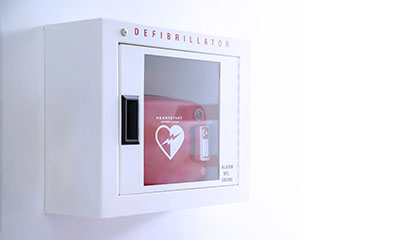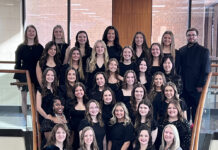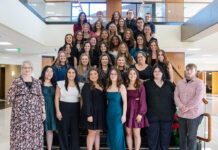
BIRMINGHAM, Ala. – Last Monday night, we joined the millions of others across the world who watched in disbelief as Damar Hamlin went into sudden cardiac arrest and collapsed during an NFL game. While the scene was shocking, the rapid response of medical personnel was amazing — and undoubtedly gave Mr. Hamlin a far better chance at survival.
While Mr. Hamlin benefitted from the world-class medical care provided by the Buffalo Bills, Cincinnati Bengals and National Football League, that kind of quick, life-saving action should be available to anyone, anywhere. And with Project ADAM, it can be.
Project ADAM is a nationwide initiative that has saved the lives of more than 200 children, adolescents and adults who went into sudden cardiac arrest. It was started in 1999 with three primary goals:
- Raise awareness about sudden cardiac arrest in children and adults
- Create safety nets across communities to prepare bystanders to respond confidently to a sudden cardiac arrest
- Serve as a resource in the establishment of cardiac emergency action plans within schools, community centers, youth sports and beyond, to create more Heart Safe spaces
Out of this tragic event we know that positive action must emerge. Help us apply the lessons learned to ensure our communities are equipped to respond to cardiac emergencies like Mr. Hamlin’s. Right now, as the world’s attention is tuned to heart emergencies, we want to encourage every single person to learn CPR and how to use automated external defibrillators (AED). On average, if someone has a sudden cardiac arrest outside of a medical setting, they have approximately a 10% chance of survival.
As pediatric health systems, we believe that every school, athletic field, health club, community center — in fact, anywhere youth tend to gather — should have a cardiac emergency action in place that is practiced regularly. This approach can, and will, continue to help save lives as was so beautifully demonstrated on the football field in Cincinnati last Monday night.
As all of our thoughts remain with the health of Damar Hamlin — and we all take a collective sigh of relief with each bit of positive news — we are reminded of Adam Lemel.
In 1999, 17-year-old Adam went into cardiac arrest during a high school basketball game and passed away. In the wake of that tragedy, Adam’s family was determined to ensure no one else would suffer the same fate. Together with Stuart Berger, MD, and Children’s Wisconsin, they formed Project ADAM (Automated Defibrillators in Adam’s Memory). Today, there are 38 Project ADAM affiliated sites in 29 states.
While sudden cardiac arrest is uncommon in young people, it sadly does happen. And it’s exactly that — sudden and unexpected. But, immediate CPR and the availability of an AED can double or triple a person’s chance of survival. So while you can’t predict when one might strike, you can plan your response. That’s where Project ADAM is making a difference.
For more information about Project ADAM, educational resources and how to become an affiliated site, visit the Project ADAM website at projectadam.com. To make a financial donation to your local Project ADAM affiliate site, visit childrensal.org.
Stuart Berger, MD, Medical Director, Ann & Robert H. Lurie Children’s Hospital of Chicago Heart Center and Division of Pediatric Cardiology; Medical Director, Project ADAM National and Illinois
Anoop Singh, MB BCh, Program Director, Cardiac Electrophysiology, Children’s Wisconsin; Medical Director, Project ADAM, National and Wisconsin
About Children’s of Alabama
Since 1911, Children’s of Alabama has provided specialized medical care for ill and injured children, offering inpatient, outpatient and primary care throughout Central Alabama. Ranked among the best children’s hospitals in the nation by U.S. News & World Report, Children’s serves patients from every county in Alabama and nearly every state. Children’s is a private, not-for-profit medical center that serves as the teaching hospital for the University of Alabama at Birmingham (UAB) pediatric medicine, surgery, psychiatry, research and residency programs. The medical staff consists of UAB faculty and Children’s full-time physicians, as well as private practicing community physicians.


















